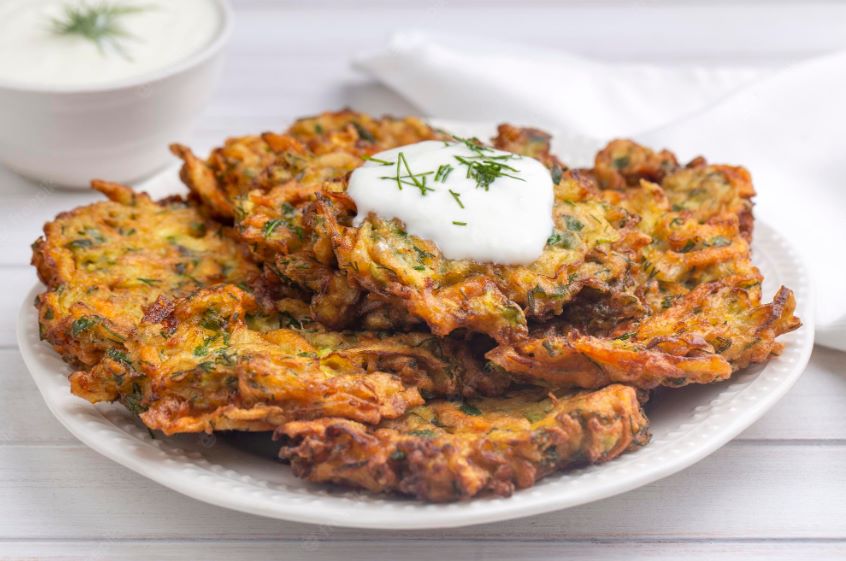The next stop of the Taalkeuken series, in which we prepare meals from all over the Mediterranean, is Turkey. This time we’re cooking kısır and mücver, two very simple yet delicious dishes that are very popular in Turkish cuisine. Read through for a little sneak peek before the workshop on the 1st of April!
What is mücver?
Mücver is a generic name for a vegetable-based pancake. Since the most popular version is made with courgettes, you’ll most probably get courgette mücver (kabak mücveri) when you only read ‘mücver’ on a menu. Other versions include potato mücver (patates mücveri), leek mücver (pırasa mücveri), or carrot mücver (havuç mücveri) and many others depending on your creativity or how determined you are to not wasting food.
What I have observed growing up in Turkey and in time acquired as a habit, is that we (feel the urge to) make mücver when we don’t want to waste the leftovers of another dish. For example, if the main dish of the dinner is kabak dolması (filled courgettes), there is no reason to not see also mücver on the table, prepared using the zucchini cores and the stems of the greens with some other essential ingredients (below) that you usually have in a typical kitchen cabinet.
Don’t worry, you don’t need to make another dish to have an excuse for mücver. Make and eat it whenever you want!
Ingredients (Melzemeler):
Courgette (kabak)
Fresh dill (taze dereotu)
Fresh parsley (taze maydanoz)
Spring onions (taze soğan)
Egg (yumurta)
Wheat flour (buğday unu)
Salt (tuz)
Black pepper (kara biber)
Dried mint (kuru nane)
Olive oil (zeytin yağı)
Sauce (Sos):
Yoghurt (yoğurt)
Dill (dereotu)
Water (su)
In the workshop, we’ll make mücver with the leftover stems of greens we put in kısır.
What is Kısır?
Kısır is a popular Turkish salad made with fine bulgur, tomato and pepper paste, fresh vegetables, herbs, and spices. It is in fact the Turkish version of tabbouleh. According to The Etymological Dictionary of Contemporary Turkish by Nişanyan, the name of the dish comes from the Arabic word kasīr كسير, meaning broken, or in Turkish kırık. That makes sense because the main ingredient of the dish, fine bulgur (ince bulgur), is sometimes also referred to as broken bulgur (kırık bulgur).
The ingredients (malzemeler) and the recipe (tarif) might vary but this is how I like my kısır:
Ingredients (Malzemeler):
Fine bulgur (ince bulgur)
Hot water (sıcak su)
Tomato paste (domates salçası)
Pepper paste (biber salçası)
Olive oil (zeytin yağı)
Spring onions (taze soğan)
Fresh parsley (taze maydanoz)
Fresh dill (taze dereotu)
Garlic (sarımsak)
Cucumber (salatalık)
Pickles (turşu)
Pomegranate molasses (nar ekşisi)
Lemon juice (limon suyu)
Dried mint (kuru nane)
Cumin (kimyon)
Sumac (sumak)
Salt (tuz)
Enjoy! Afiyet olsun!
This blog is written by Turkish teacher Filiz.


